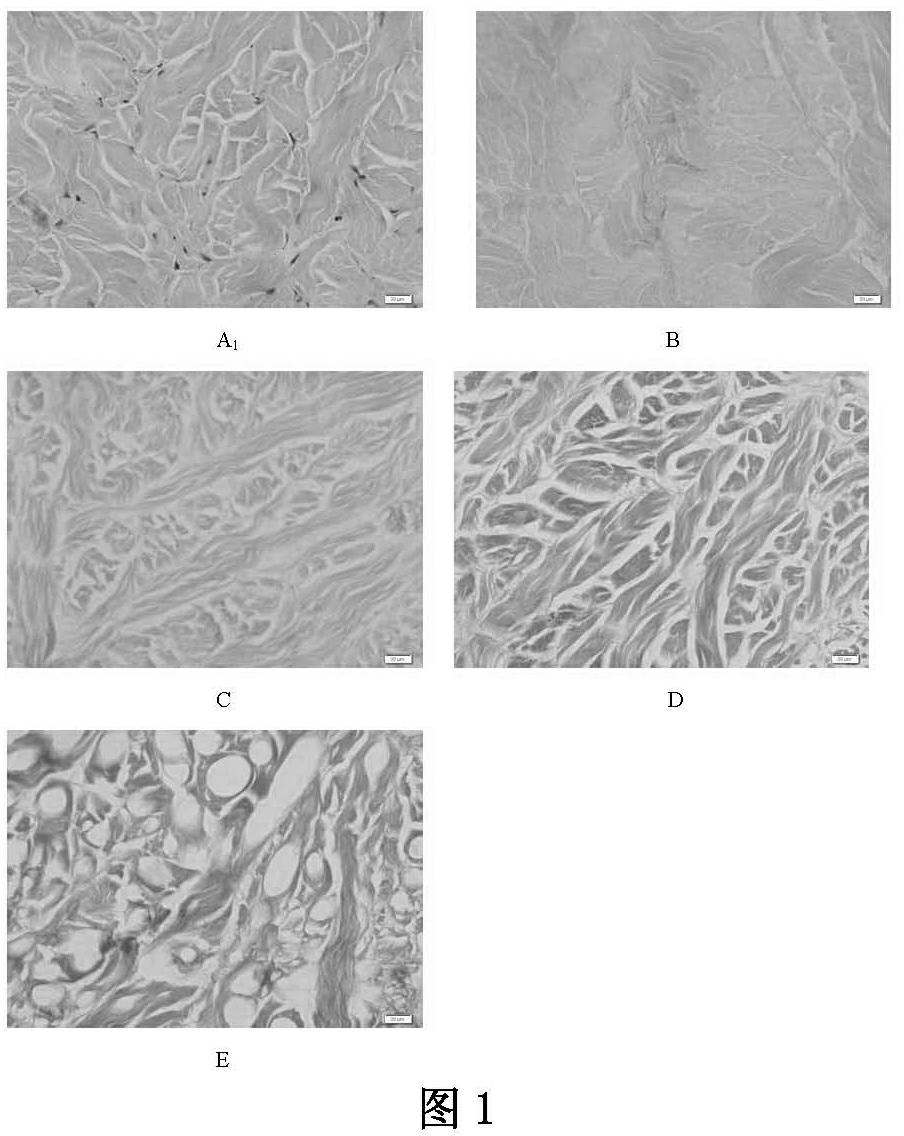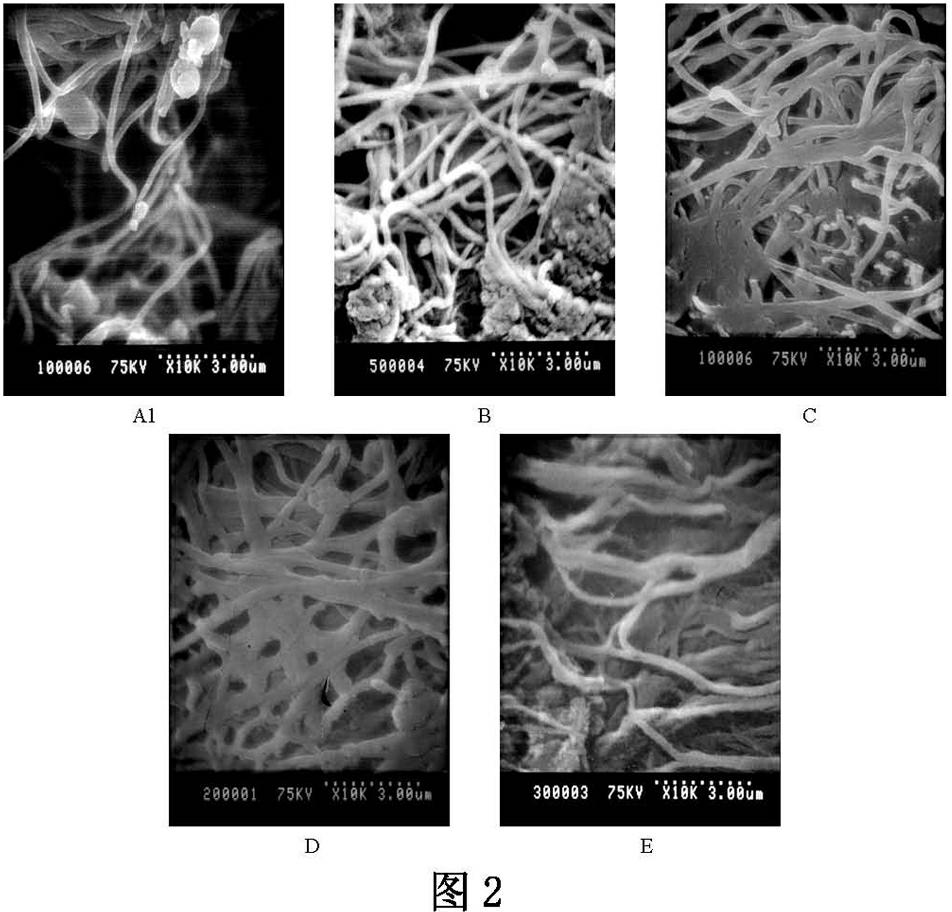Method for preparing low-immunogenicity pig dermal support
An immunogenic, dermal technology, applied in medical science, prostheses, etc., can solve the problems of incomplete removal of cell debris components, imperfect barrier function, slow vascularization rate, etc., and achieve normal tissue structure and cell-free Toxicity, the effect of reducing local scars
- Summary
- Abstract
- Description
- Claims
- Application Information
AI Technical Summary
Problems solved by technology
Method used
Image
Examples
Embodiment Construction
[0077] The preparation method of the low immunogenicity porcine dermal scaffold of the present invention comprises the following steps:
[0078] ①Preparation of "double fault" dermis: a. Pigs were sacrificed for hair removal, their skin and part of subcutaneous tissue were peeled off, disinfected and rinsed;
[0079] b. First cut off the epidermis and papillary dermis layer of the skin, then cut off the subcutaneous tissue and the part of the reticular layer of the dermis connected to it, and keep the reticular layer of the dermis with a thickness of 0.5-0.6mm, which is the "double fault" dermis;
[0080] ② Decellularization treatment: a. Prepare 2.5U / ml neutral protease (Dispase II) solution and 0.5% polyethylene glycol octylphenyl ether (TritonX-100) solution by volume;
[0081] b. First put the "double-faulted" dermis described in step ① in 2.5U / ml Dispase II solution, and act for 24 hours at 4°C. At least 2.5ml of "double-faulted" dermis of 0.5-0.6mm per square centimeter ...
PUM
| Property | Measurement | Unit |
|---|---|---|
| Thickness | aaaaa | aaaaa |
| Thickness | aaaaa | aaaaa |
| Thickness | aaaaa | aaaaa |
Abstract
Description
Claims
Application Information
 Login to View More
Login to View More - R&D
- Intellectual Property
- Life Sciences
- Materials
- Tech Scout
- Unparalleled Data Quality
- Higher Quality Content
- 60% Fewer Hallucinations
Browse by: Latest US Patents, China's latest patents, Technical Efficacy Thesaurus, Application Domain, Technology Topic, Popular Technical Reports.
© 2025 PatSnap. All rights reserved.Legal|Privacy policy|Modern Slavery Act Transparency Statement|Sitemap|About US| Contact US: help@patsnap.com



